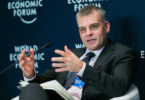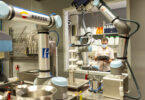Flatpacks – a key factor in IKEA’s global growth- have revolutionized furniture-making and home furnishing, permitting more stock to be stored in every store, easing transport and democratizing design. Fast forward to 2022 and the kind of inexpensive “fast furniture” that led to IKEA’ success with consumers is clogging landfills and seen as bad for the environment.
It is just one example of how innovations that serve as a core part of a company’s strategy can become a liability as consumer desires and society changes.
IKEA, like many other companies, has adopted sustainability as part of its strategy. It is vowing to become fully circular — using only recycled or renewable materials and creating zero waste — by 2030 and is offerings its clients a way to do the same with offers ranging from solar panels to updateable intelligent furniture. IKEA is also experimenting with refurbishing products, using more recycled materials,
But unlike many other companies, the Swedish home furnishings giant has a strategy to help it avoid getting blindsided by these kind of market shifts. It has an established process for getting ahead of its view of the customer, so it knows where it is going to go five to ten years from now and how that is likely to impact its product development cycle.
IKEA’s secret weapon? SPACE10, an outside research and design lab it invested in that is entirely focused on how changes in society and technology will impact what consumers want. “Our job is to think about the IKEA customer of the future,” says Daniel Friis, head of strategy and partner at Space10.
Focusing On Human Centric Design
The idea for SPACE10 developed after a business run by one of the co-founders- Carla Camilla Hjort – showed up on IKEA’s radar. Hjort’s company was taking a very different approach to business: it had a low head count but a large network and had developed its own community. “That approach was quite appealing to IKEA and novel at the time,” says Friis. Hjort pitched IKEA on an approach to innovation that would give it an outside-in perspective with community input and SPACE10 was born.
SPACE10, which is independent but restricted to having IKEA as its only client, has a team of 27 people from 12 countries focused on coming up with ideas for human and planet centric designs to meet future demand. The medium age is 34. The team’s expertise runs the gamut from solar energy to trend forecasting. “The common denominator is that they are all entrepreneurial, value-driven and dedicated to making the world better,” says Friis.
While the team has fewer blind spots than if it was homogeneous, it still has them, says Friis. That is why SPACE10 seeks input from different communities. “We use different formats pop-ups, field studies, and satellite operations in different places in the world,” says Friis
Using Pop-Ups To Test New Ideas
“Pop-ups are where we do research and design and community building,” says Friis. “These are temporary spaces where we host workshops, events, field studies and co-creation design work. We also do workshops with students around emerging tech.”
For example, earlier this year SPACE10 hosted 14 days of open talks, panels, hackathons, workshops, and art exhibitions for the local community in Mexico City. It worked with five Mexican designers to explore how to use discarded natural materials and create better design processes to support local ecosystems. Through an intensive six weeks of doing research and experimentation the designers each identified and explored new possibilities and uses for a local biomaterial of their choice. One designer used the discarded fibers from tamarind fruit to make thread and wove a 2-meter-long rug (see the photo), while another used corn husks to make food packaging. These were then presented at a pop-up in Mexico City and later at exhibitions at design centers in other parts of Mexico. SPACE10 also worked with the IKEA team on the ground in Mexico and held a materials workshop to further explore the project.
The Mexican pop-up “was one way to explore local materials and how they might be used in future production,” says Friis.
SPACE10 says it sees a lot of interesting opportunities to innovate in places such as Mexico City, Shanghai, and New Delhi. “We want to be close to those developments so we can address the obstacles they are facing,” says Friis. The Copenhagen-based research and design lab has done field studies in India, Indonesia, and South America to learn about how people live without energy or limited access to it. “We had some preconceived ideas,” he says, “but the reality turned out to be very different when we spoke to people on the ground.”
Open Innovation
Everyday Experiments, an open innovation platform that SPACE10 built and co-branded with IKEA, serves as another way to connect with outside communities. It is a place where designers and technologists can collaborate on emerging technologies. “It is a great way to get a lot of different perspectives and concepts that we would not come up with in-house,” says Friis.
The experiments dive into advanced technologies such as AR/VR/MR, spatial audio, spatial mapping, IoT, 3D reconstruction, object detection, GAN (a class of machine learning framework), AI, blockchain, and more.
Some projects have addressed privacy and trust in private spaces, while others challenged how the home could play a role in creating a healthier and more regenerative environment for its residents.
One project from Everyday Experiments showcases what would happen if IKEA furniture had the autonomy to improve and evolve to extend its life. The application would make use of an evolutionary algorithm–a piece of machine learning code inspired by biological evolution–to generate new elements, adding and swapping different IKEA parts for entirely novel combinations. Over time, furniture would continuously develop in unexpected ways, modifying further with each generation and making every Updatable unique, with its own name, story, and family tree.
With Updatables, when the time finally comes to discard a piece of furniture, it wouldn’t need to go to waste. Instead, its parts could enter the circular ecosystem where others could collect them for their own modifications. Like other Everyday Experiments the project is speculative.
The goal is not to prototype products, but to have the freedom to collectively imagine how the world will look like in five to 10 years, and how IKEA could fit into that picture, says Friis. Importantly, the approach gives space for multiple narratives of possible futures.
From Ideation To Iteration
One early, oft cited, SPACE10 project concerns the future of food. It helped prompt a rethinking of IKEA’s popular meatballs and the introduction of a wider variety of healthier and more sustainable food choices in its in-store restaurants.
After reading a dense report on the future of food In 2015, SPACE10 decided to used the shape and size of the popular IKEA meatball – it sells a billion a year in its stores -as a canvas for future foods scenarios, a way of visualizing complicated research in what it said at the time was a “simple, fun and familiar way.” SPACE10 worked with a food designer, a graphic designer and a storyteller to propose eight alternatives to meatballs. These included balls made from fresh produce waste at local farms, 3D printed protein balls, balls made of insect protein, algae balls made from aquatic plants that could be grown in vertical fermentation tanks, and balls made from new varieties of grains, legumes, and nuts. Over the past seven years IKEA has introduced veggie balls, vegetarian hot dogs, 3D printed meatballs and most recently a plant-based meatball that tastes like meat and has just 4% of the carbon footprint of their standard meatballs.
“The future of food ended up being quite a popular conversation and sparked a lot of other ideas,” says Friis. People sent SPACE10 photos of how they were producing food locally, including the use of hydroponic farming, a method of growing plants in water instead of soil. “We decided to hack this ourselves until we found a system that worked well,” says Friis. “Then we took that idea and did a pop-up in London and installed a vertical hydroponic farm system in a retail format. We produced greens locally and made salads and told people to come and enjoy them at our pop-up because we wanted to test this with real people.” Eventually IKEA committed to hydroponic farms in their stores. SPACE10 also produced a cookbook about the future of food called Future Food Today.
The innovation around food was “not a linear process,” says Friis. “We start conversations, we spark ideas and that ends up populating other ideas. It is a really good example of the kind of stuff we do.”
Aligning On The Why
Other new innovations are either under NDA or are not yet on track to be developed into prototypes. Bringing new perspectives takes time, says Friis. “Creativity and innovation are not something you can put on an assembly line. It doesn’t work like that.”
From the beginning SPACE10 agreed with IKEA to focus on “building brand, business, and culture, with high-level objectives and “very deliverable specific KPIs,” says Friis. The KPIS do not include X number of products introduced. “We measure our brand impact, that alone pays back [IKEA’s] investment, “says Friis. Measuring the business impact is trickier. “We are working with long time horizons, sometimes the changes can be immediate but other times it takes a decade, so it is more difficult to measure at scale,” he says.
Taking an outside-in approach to innovation helps SPACE10 bring fresh perspectives to IKEA but it can be challenging as an independent organization to work with a large company. “It is extremely difficult to succeed with innovation outside the big machine,” says Friis. “Ideas are easy – we have plenty of ideas – but they are also very fragile. We are 27 people, IKEA has 250,000. It is a big, big challenge.”
SPACE10 meets with the management of IKEA at frequent intervals. “It is important to have buy-in from the top,” he says, “We also meet with people who are closer to the action where things happen. This is equally important, as our future is shaped by the obstacles we face.”
One of the most important lessons that SPACE10 has learned is “the why is more important than the how,” says Friis. “There are many possible solutions,” he says, “It is not about getting the ideas right. Many ideas can be right. And it is not about how you do it. It’s about why you are doing it, the energy you put into an idea and about the willingness to allow it to happen.”
“These three ingredients – buy-in from the top, interfacing with communities on the ground who are closest to the challenges, and alignment on why we are doing something” – are the keys to not only anticipating but successfully building the future, he says.
This article is content that would normally only be available to subscribers. Sign up for a four-week free trial to see what you have been missing
To access more of The Innovator’s Deep Dives click here.






